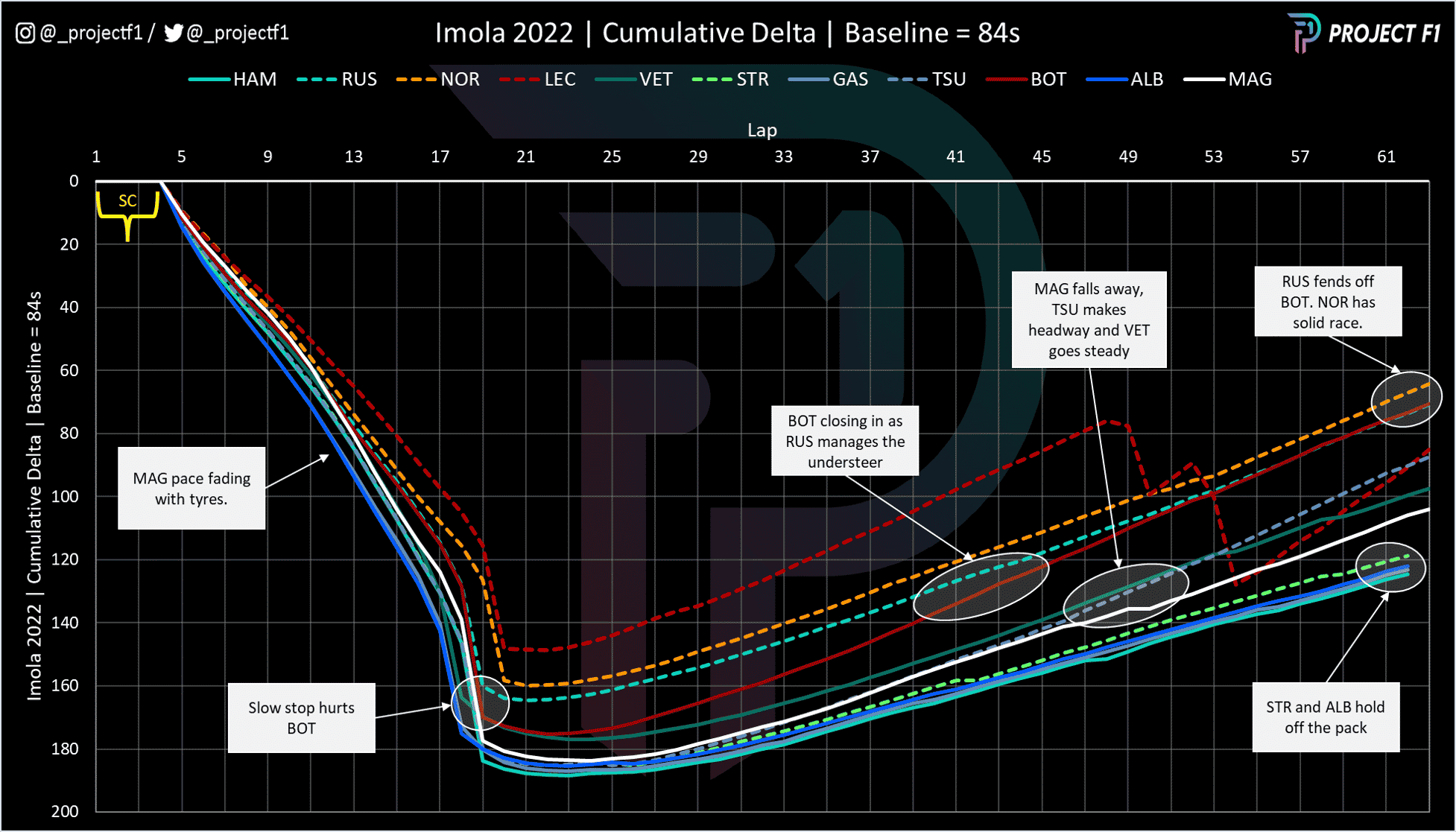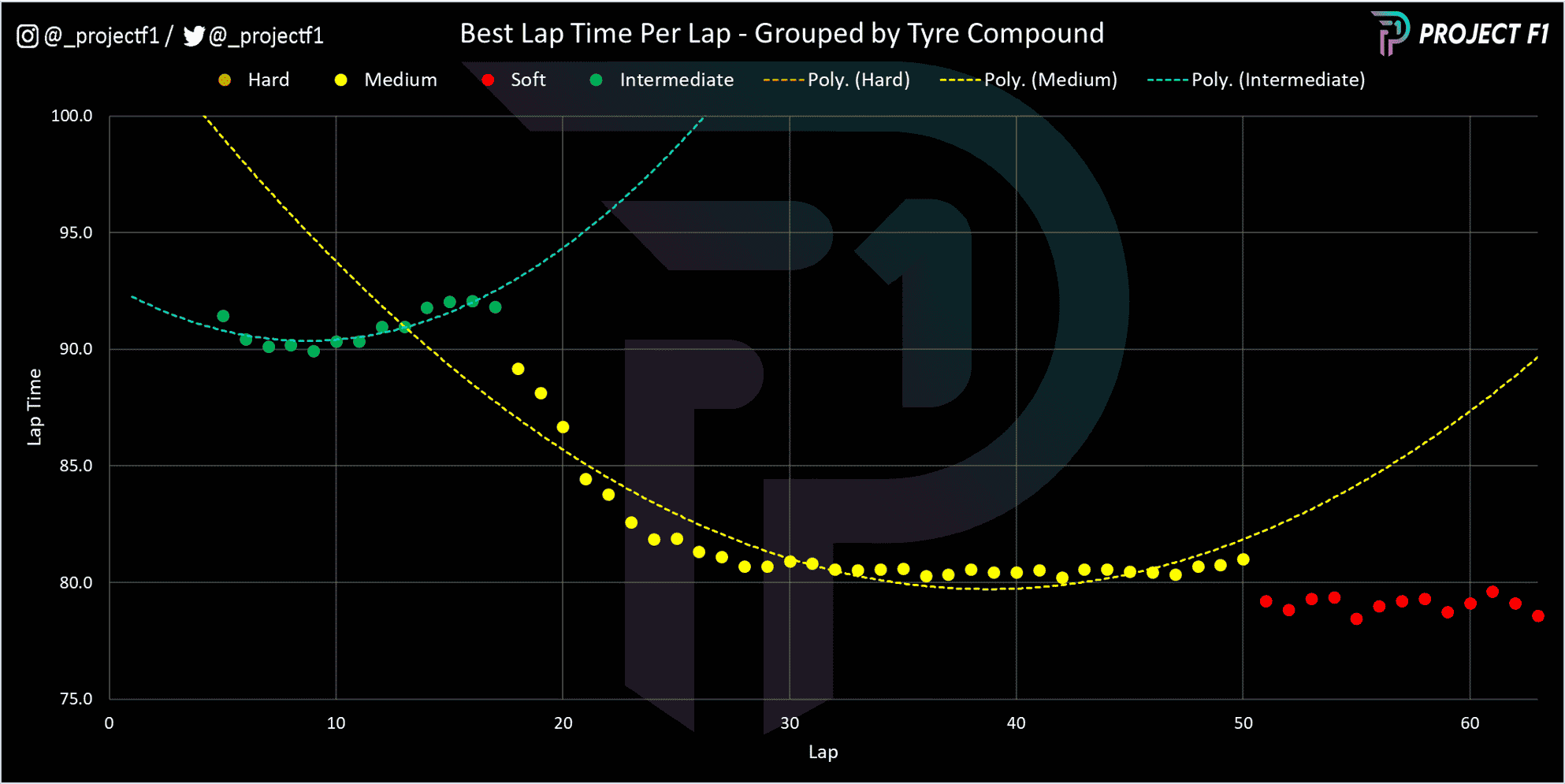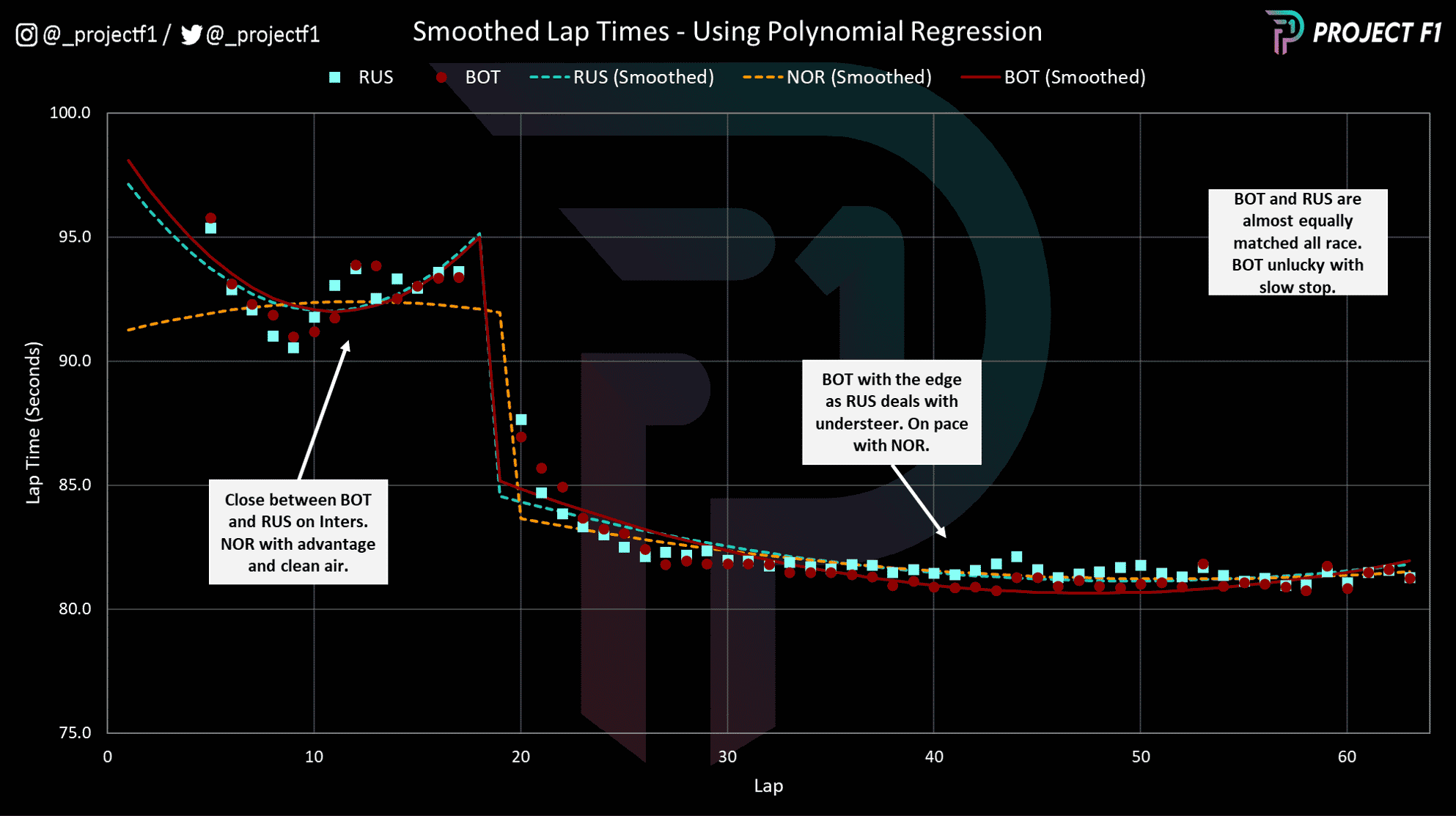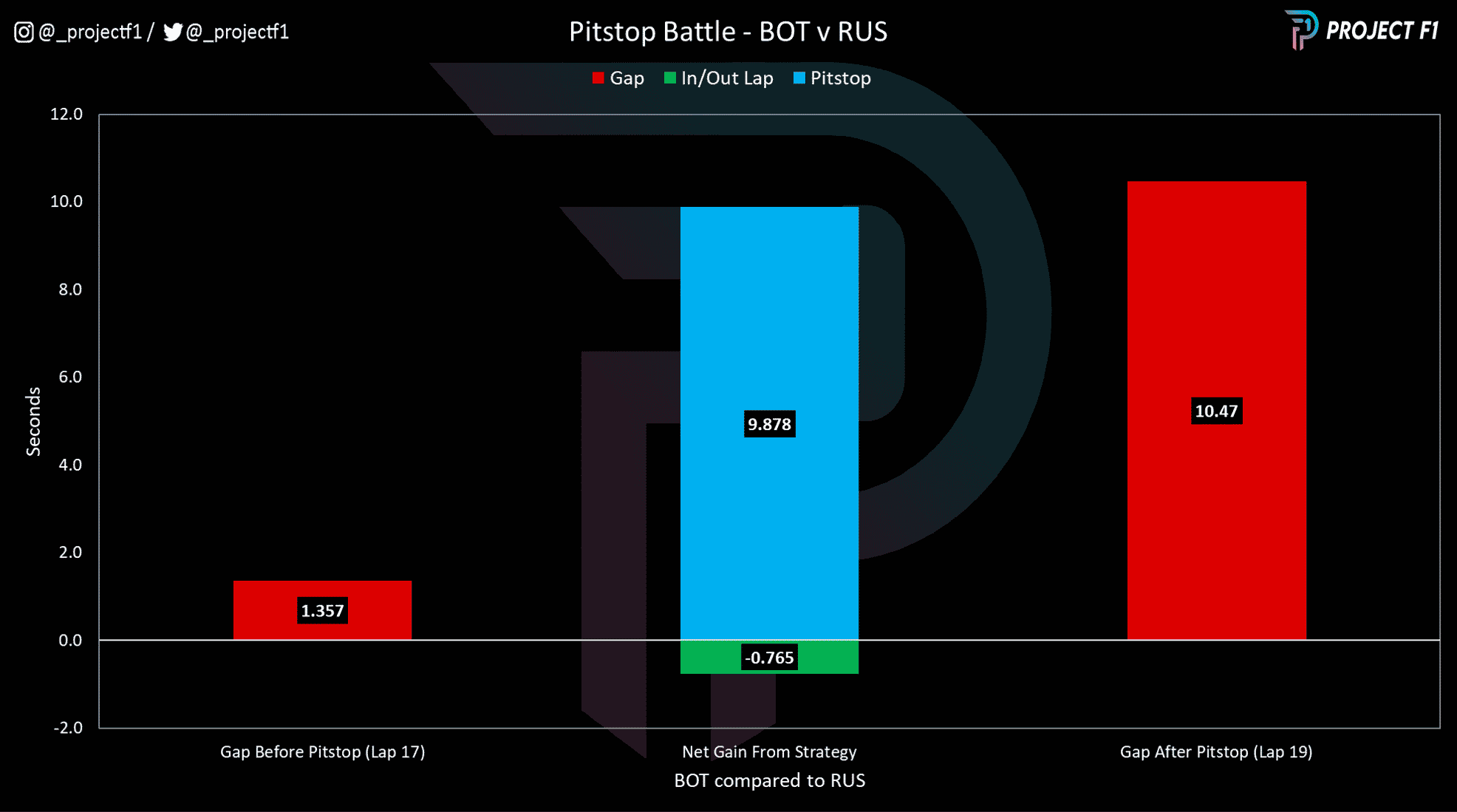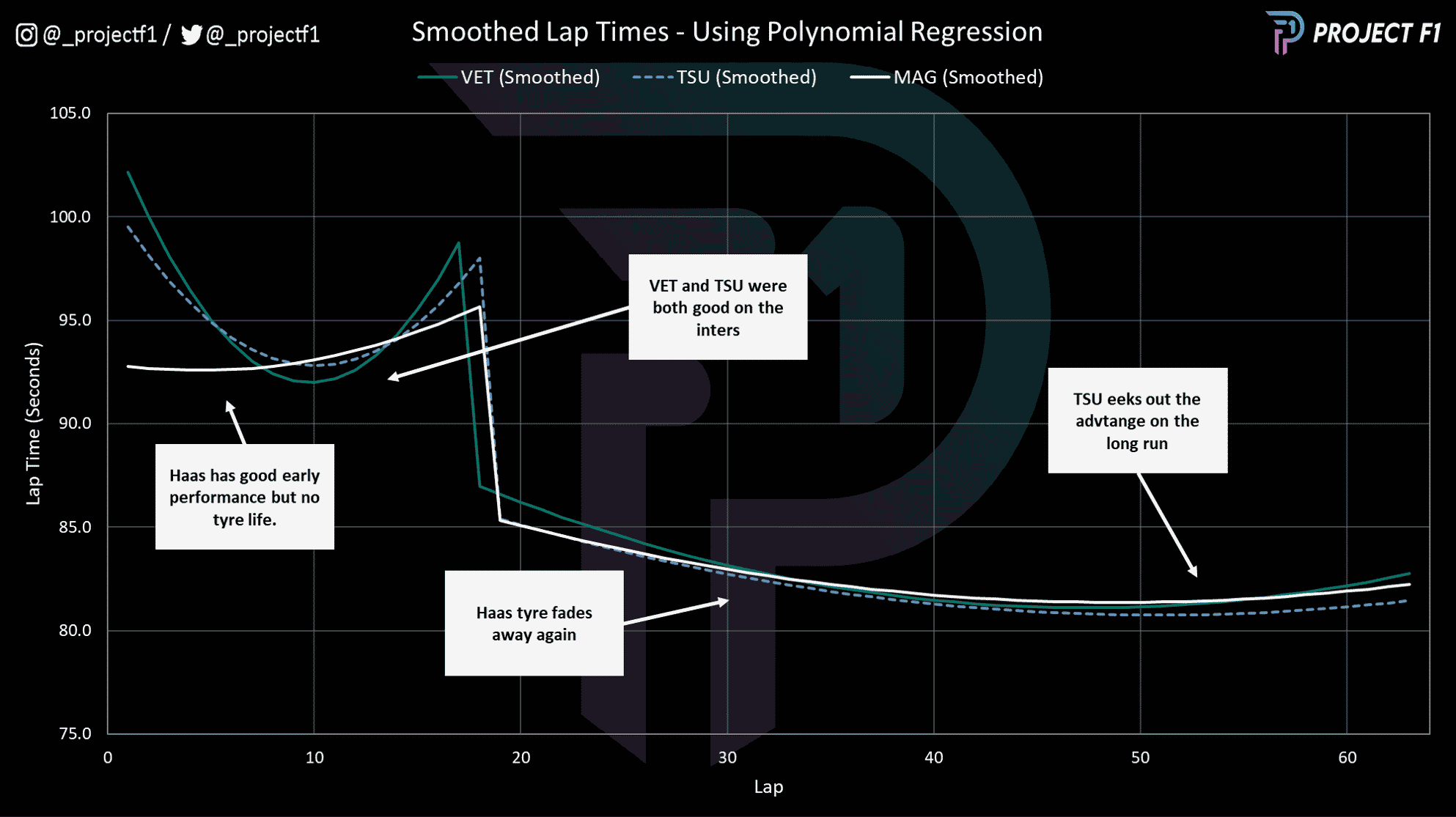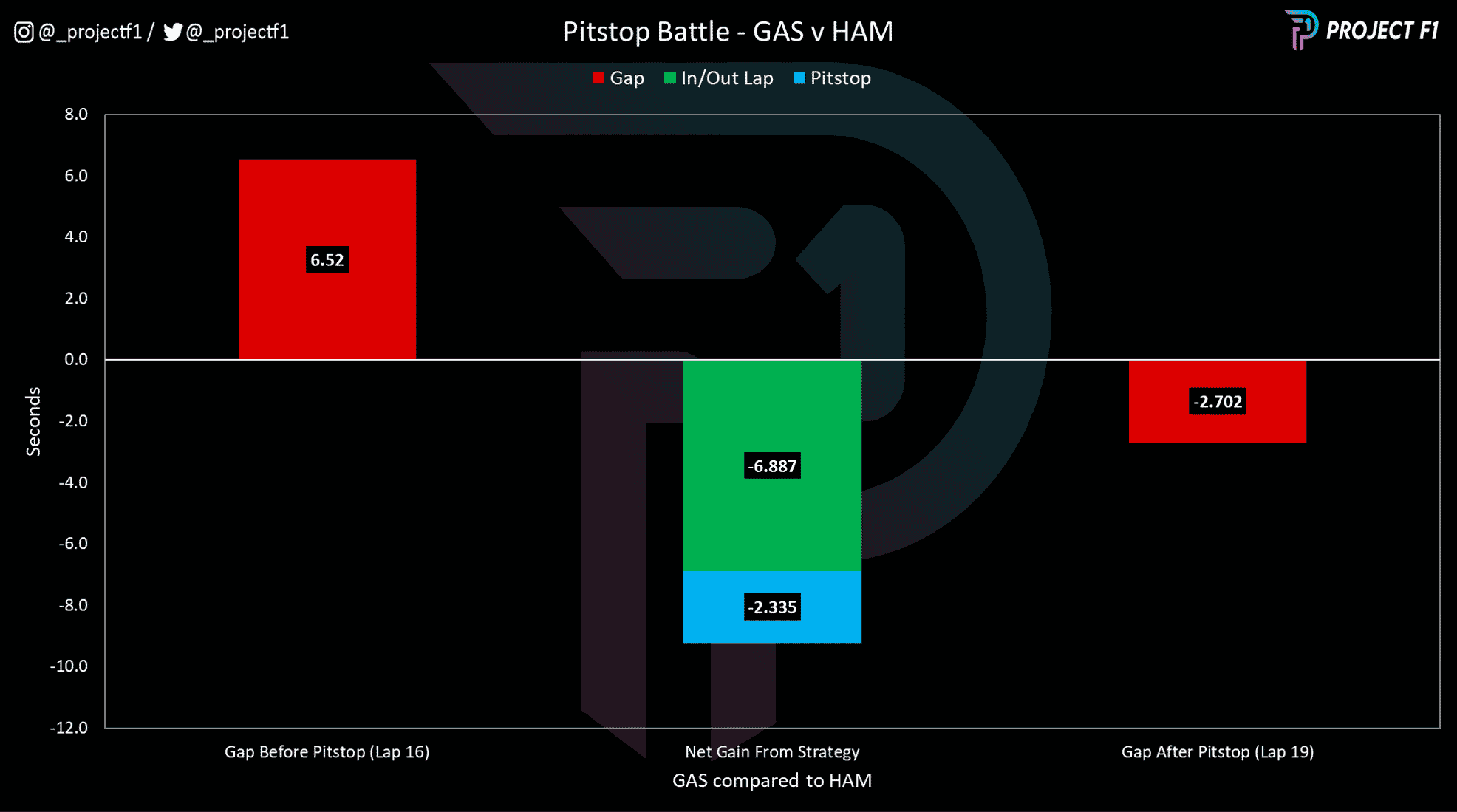Bottas on the podium and Hamilton unleashed: Imola GP data shows what could have been
All the data from the tight midfield battle at the Emilia Romagna Grand Prix analysed
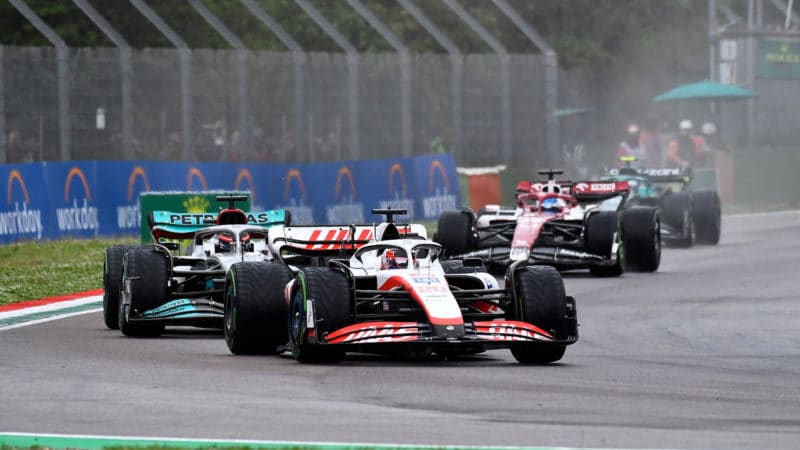
Fortunes in the midfield runners changed along with the track conditions
Grand Prix Photo
Data by Ekagra Gupta, words by Jake Williams-Smith
Aston Martin left Imola with a double points finish and Alfa Romeo claimed fifth place with Valtteri Bottas. But neither team can be fully satisfied with the Emilia Romagna Grand Prix because analysis of the race data shows that they could have done even better.
Daniel Ricciardo was the first to swap his intermediate tyres for slicks in the 2022 Emilia Romagna Grand Prix on lap 17 of the race. His immediate pace brought the rest of the field racing to follow him straight away.
What if someone had been even bolder? Analysis of race data in association with @_ProjectF1 shows that slicks are likely to have been faster than intermediates three laps earlier, giving earlier stoppers a greater advantage.
The cautious approach certainly didn’t pay off for Lewis Hamilton and we identify the error that left him stuck behind Pierre Gasly in 14th place.
We can also see just how much pace Bottas had, and why his lengthy pitstop could well have cost him a podium place.
And what if the rain had returned? Clear differences in cars’ competitiveness in wet and dry conditions could have seen another reshuffle. Here’s what the data shows.
Chart 1 – Race story – Cumulative Delta Plot
The above graph charts the races of Lando Norris who finished third and Lewis Hamilton, who finished 14th on the road but was promoted to 13th following the application of Esteban Ocon’s five-second time penalty.
It was a wet-dry race that brought the field closer together and yielded different benefits for different teams. Norris and Sebastian Vettel were two drivers in the midfield that were able to show strong pace relative to others on the intermediate tyres.
Norris was able to maintain his level of performance throughout with Vettel eventually starting to fall into the clutches of Yuki Tsunoda in the closing stages of the race. This shows that while the Aston did well in Imola, it was certainly helped by the wet conditions.
Tsunoda had solid pace all round but really shone in the back half of the stint on the medium tyre.
Kevin Magnussen had good pace early in both stints, but faded away relatively quickly and would have to nurse his tyres to be able to make it to the required stint length.
Bottas was on the heels of George Russell in the Mercedes by the end, but he may have been ahead had he not been hampered by a slow pitstop that left him with the arduous task of getting the move done on track.
Russell was able to hold on to the end despite not having the opportunity to adjust his front wing flap following the transition to slicks – resulting in understeer throughout his medium tyre stint.
Lance Stroll also did well to stay clear of Alexander Albon and the pack behind. Hamilton meanwhile was stuck behind Pierre Gasly from the change of tyres to the end of the race.
Chart 2 – Wet/Dry Crossover
The transition from wet to dry tyres is always a pivotal moment in a race and was the case in Imola.
Most drivers were quite reserved in testing the waters despite multiple accounts of a drying track and many of the drivers starting to run out of wet patches to cool the overheating intermediates.
Even the upward trend of lap times on the intermediate tyre wasn’t enough to tempt an early stop by anyone except for Daniel Ricciardo, who had nothing to lose having dropped to the back on lap one. By switching to slicks on lap 17, it also meant he could gather information to assist his team-mate’s race. At this point it was clear that the track was ready for the transition with a dry line having formed around much of the lap.
However, with the benefit of hindsight, an extrapolation of the trend pace from the medium tyre runners suggests that the crossover point could have occurred as early as lap 14. This extrapolation can only account for the trend in pace and not the specific variables – something that would require more privileged data access that the race teams benefit from. And while this exercise isn’t designed to find an inch perfect answer, it does provide an indication that the switch could have occurred a lap or two earlier than what was the case in reality.
In a field of relatively cautious approaches to strategy, perhaps the option to go for a bold call could have paid massive dividends.
Chart 3 – Lap Times Compared: Bottas vs Russell vs Norris
Looking at the upper midfield shows the tale of two halves in the wet and dry parts of the race.
McLaren had the measure of the others in the wet but it was a much closer contest in the dry.
Bottas was actually the faster driver for much of the dry stint but was not able to get enough of an advantage to clear Russell by the end of the race.
A slow pit stop for the Finn, down to a cross-threaded wheel nut, cost him time to Russell on track which he was forced to make back up in the final stint.
Had he not had as much of a margin to make back up, Bottas may well have been fighting with the other Briton in front of him for a podium finish, as evidenced by the better pace from the Alfa Romeo driver in the graph above for large parts of the race.
Chart 5 – Lap Times Compared: Vettel vs Tsunoda vs Magnussen
Chart 5 provides a clearer picture in the pace differential between Aston Martin, AlphaTauri and Haas.
Haas was fast initially but then fell away after 10 laps or so. Aston Martin had good performance relative to others in the wet but would be on par in the dry.
Tsunoda was on equal footing for most of the race until he was able to stretch out an advantage in the latter part of the dry tyre stint.
Chart 6 – Strategy Decomposed: Gasly vs Hamilton
Hamilton was stuck behind Gasly for the entirety of the second stint, at the back of a DRS train headed up by Albon in the Williams.
This all came down to pitstops whereby Gasly was able to use the extra lap of tyre warm up to overtake the Mercedes driver as he rejoined the track from his stop. From that point on, he was then able to keep the seven-time champion at bay, edging into DRS range of Albon ahead to assist just as the system was enabled.
While an equivalent pitstop might not have been exactly enough to guarantee coming out ahead, it could have had a profound impact on Hamilton’s ability to clear the AlphaTauri. However, given the performance from Sunday, perhaps the Mercedes would have struggled with the next set of traffic anyway.
In the end it was a great performance by Bottas – showing the pace to rival the McLaren in clean air and missed out on P4 due to a slow stop.
Norris and Vettel both delivered their results based on their performance in the wet. McLaren appear to have found its form again while Aston Martin will welcome the result as it works to improve pace in the dry.
Tsunoda had an excellent drive – attributed largely to his tyre management and extracting performance at the end of the stint rather than the start. AlphaTauri’s upgrades also appear to be good step forward in terms of performance.
Magnussen once again was good initially, but suffered in stretching the performance across the entire length of the stint.
Hamilton was also unlucky due to pitstops but didn’t seem to have the pace in the traffic and was well off his team-mate all weekend.
Project F1 turns data into graphics that uncover race pace and strategy
See more analysis at @_ProjectF1 on Twitter or @_ProjectF1 on Instagram
